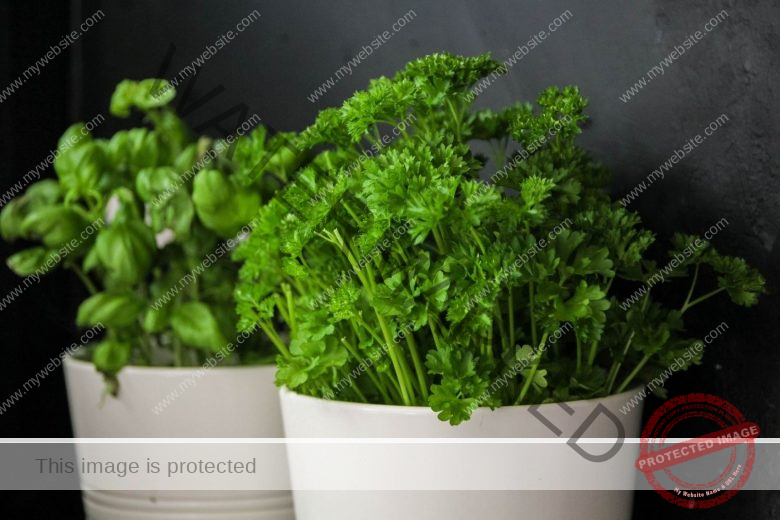Groundnuts are a popular snack and a nutritious legume that is enjoyed by many. They are relatively easy to grow, and can be grown in a variety of climates and soil types including Zimbabwe.
Groundnuts are a major crop in Zimbabwe, providing an essential source of nutrition, income, and employment. Growing groundnuts in Zimbabwe requires knowledge of the climate, soil, and irrigation methods.
To get started growing groundnuts, choose the right farming site, prepare the site for planting, acquire the right variety, seed planting, adequate watering, mulching, fertilizer application, pest and disease control, and harvesting.
With the right information, care, and maintenance, you can successfully grow groundnut in Zimbabwe and have a bountiful harvest of groundnuts in no time!
How To Grow Groundnut in Zimbabwe
Groundnut can be grown by anyone as long as you have the right information and knowledge. With the information provided in this article, you can grow groundnut in your backyard garden and or on a large farm for commercial purposes.
#1. Choose The Right Farming Site
The best site for growing groundnuts in Zimbabwe is an area with well-drained soil and a sunny location. The soil should be slightly acidic to neutral, and rich in organic matter.
Groundnut plants need a long growing season with warm temperatures, so a location that receives plenty of sunlight is ideal. Groundnuts prefer a well-draining, loamy-sandy soil that has a pH between 5.5 and 6.5, and irrigation is often helpful for optimal yields.
#2. Prepare The Site For Planting
After you have acquired the right planting site, ensure you carry out the following to prepare the site for planting.
Test the Soil
Before planting groundnuts, it is important to test the soil for nutrient content and pH levels. This can help determine the best fertilizers and amendments to add to the soil for optimal growth.
Clear The Land
The land must be cleared of weeds and other debris before planting. This will help ensure the groundnuts have enough room to grow and won’t be competing with other plants for nutrients and water.
Till The Soil
Till the soil to a depth of 8-10 inches to ensure proper aeration and drainage. This will also help break up any compacted soil and provide a better environment for the groundnuts to grow.
Add Compost and Fertilizer
Once the soil has been tilled, add a layer of compost and fertilizer to provide the groundnuts with the nutrients they need. The type and amount of fertilizer will depend on the test results of the soil.
#3. Acquire The Right Varieties
In order to select the right groundnut varieties that you can plant in Zimbabwe, you have to select varieties that are adapted to the local environment and that have a good yield potential.
Also, pay attention to the level of resistance of the varieties you are selecting to common diseases and pests in the area. So, the seed chosen should be pest and disease resistant.
Choose varieties that produce good quality groundnuts and have a good shelf life, and select varieties that have a good yield potential and are adapted to the local environment.
#4. Seed Planting
Before planting your groundnut seedlings, make sure you have selected quality seedlings and soak them in water 6 hours before planting.
To plant the seeds, make a furrow on the farm bed or till to a depth of 1.5-2 inches and pour 4 to 5 groundnuts seed in the hole, cover with topsoil, then water them thoroughly.
Make sure to space them 4-6 inches apart in rows that are 12-18 inches apart so they have enough room to grow.
#5. Adequate Watering
Water the groundnut seeds thoroughly throughout germination. Water the groundnuts once or twice a week, depending on weather conditions.
#6. Mulching
Mulch the groundnuts with straw or hay to conserve moisture and as well reduce weeds.
#7. Fertilizer Application
Apply fertilizer only if necessary. It is best to fertilize the groundnut every 2-3 weeks with a balanced fertilizer.
#8. Pest and Disease Control
Groundnuts are prone to pest and disease infestations. Ensure you monitor the groundnuts for signs of disease or pests and take appropriate action. You can make use of organic fertilizer or introduce natural pest predators to do the job.
#9. Harvesting
Harvest the groundnuts when the leaves begin to yellow and the pods are full and dry. Pull the plants up by the root and shake off the soil. Dry the groundnuts in the sun for several days before storing them in a cool, dry place.
Variety of Groundnuts in Zimbabwe
In Zimbabwe, there are several varieties of groundnuts that are commonly grown. These include:
- Red Valencia: This variety is popular in Zimbabwe and is known for its high yield potential and large-sized kernels.
- Manipinta: This variety is well-adapted to dryland conditions and is commonly grown in the southern parts of Zimbabwe.
- Chalimbana: This is a high-yielding variety that is well-suited to areas with high rainfall and is grown mostly in the northern parts of Zimbabwe.
- Bambara groundnuts: This is a drought-tolerant crop that is commonly grown in the dry regions of Zimbabwe.
Groundnut Prices in Zimbabwe
Groundnut prices in Zimbabwe vary depending on the season and location. On average, groundnuts are sold for around USD 1.50 to USD 2.50 per kg.
However, prices may be higher or lower depending on the quality of the groundnuts, the demand for the product, and the prevailing market conditions.
Best Agronomic Practices to Grow Groundnuts in Zimbabwe
To achieve high yields of groundnuts in Zimbabwe, it is important to engage in best agronomic practices. These include:
- Proper land preparation: Prepare the land by plowing, harrowing, and ridging to create a suitable seedbed.
- Select the right seed: Use high-quality certified seed that is well adapted to local conditions.
- Plant at the right time: Plant groundnuts when the soil moisture is adequate and the risk of frost has passed.
- Fertilizer application: Apply fertilizers at the right time and rate to achieve optimal growth and yield.
- Weed control: Control weeds in the field using mechanical or chemical methods.
- Disease and pest control: Control pests and diseases using approved pesticides and other recommended methods.
- Irrigation: Provide adequate water during the growing season.
Projected Profit of Groundnuts in Zimbabwe
The projected profit of growing groundnuts in Zimbabwe depends on various factors such as the yield per hectare, market prices, and input costs.
On average, a farmer can expect to earn around USD 1,500 to USD 3,000 per hectare of groundnuts, assuming a yield of 2 to 4 tons per hectare and a selling price of USD 1.50 to USD 2.50 per kg.
Common Diseases and Pests of Groundnuts in Zimbabwe
Some of the common diseases and pests of groundnuts in Zimbabwe include:
- Leaf spot: This is a fungal disease that causes small, circular spots on leaves. To control it, use fungicides such as Mancozeb or Chlorothalonil.
- Stem rot: This is a fungal disease that affects the stem and root of the plant, causing wilting and eventual death. To control it, use fungicides such as Metalaxyl or Carbendazim.
- Aflatoxin: This is a toxin produced by a fungus that grows on groundnuts. It is harmful to human and animal health. To control it, store groundnuts in a dry and cool place and avoid harvesting when the crop is wet.
- Aphids: These are small insects that suck sap from the plant, causing stunting and curling of leaves. To control them, use insecticides such as Imidacloprid or Dimethoate.
- Thrips: These are tiny insects that feed on the leaves, causing silvering and distortion of the plant. To control them, use insecticides such as Lambda-cyhalothrin or Methomyl.
Different Propagation Methods of Groundnuts
Groundnuts can be propagated using two methods: seed and vegetative propagation. Seed propagation involves planting seeds, while vegetative propagation involves planting vegetative parts of the plant, such as stem cuttings or runners.
In Zimbabwe, seed propagation is the most common method used to grow groundnuts.
- Seed propagation: In seed propagation, the farmer selects high-quality seed that is well adapted to local conditions. The seed is then planted in the field, either by hand or using a seed drill. The seedlings emerge in about 7-10 days, and the crop is ready for harvest after 100-120 days.
- Vegetative propagation: In vegetative propagation, the farmer selects healthy stems or runners from a mature plant and plants them in the field. This method is not commonly used in Zimbabwe, as it is more expensive and time-consuming than seed propagation.
How To Plant Groundnuts
Step 1. Choose a sunny, well-drained site with sandy, loamy soil for planting groundnuts in Zimbabwe.
Step 2. Prepare the soil before planting. Till the soil to a depth of 8 to 10 inches and mix in 4 to 6 inches of well-rotted compost or manure.
Step 3. Plant the groundnuts 4 to 6 inches apart in rows that are 12 to 18 inches apart. Plant the groundnuts 1 to 2 inches deep in the soil.
Step 4. Water the groundnuts immediately after planting, and keep the soil moist for the first few weeks.
Step 5. Fertilize the groundnuts in mid-spring with a balanced fertilizer.
Step 6. Mulch around the groundnuts to help retain moisture in the soil.
Step 7. Hand-weed the area around the groundnuts to keep them free from competition from weeds.
Step 8. Monitor the groundnuts for signs of pests or diseases.
Which Fertilizer Is Best For Groundnut
The best fertilizer for groundnut is one that contains a balanced mix of nitrogen, phosphorus, and potassium. It should also have trace elements such as zinc, manganese, and iron.
Organic compost and manure are also good sources of nutrients for groundnuts. It is important to apply the fertilizer at the right time and in the right quantities. Too much fertilizer can lead to poor growth and nutrient leaching.
Groundnuts Farming Pdf
Groundnuts, also known as peanuts, are a popular crop for farmers around the world and are a staple food for many people. Groundnuts are a versatile crop that can be used for both human consumption and animal feed. In addition to the nutritional benefits that groundnuts provide, they can also be a lucrative crop for farmers.
Groundnuts require a warm climate and a long growing season to be successful, generally three to four months. They are typically planted in early spring after the last frost and harvested in late summer. Groundnuts require well-draining soil with a pH between 6.0 and 7.5 and should be planted in rows that are spaced at least 16 inches apart.
Groundnuts are typically grown from seed, although sometimes the seeds are treated with fungicides and insecticides. The peanuts should be planted at least two inches deep and should be covered with an inch of soil. After planting, the plants should be kept moist but not overly wet as too much moisture can lead to fungal growth.
Once the groundnuts are harvested, they should be dried immediately to prevent mold growth. The peanuts should be stored in a cool, dry place and periodically checked for signs of mold. To maximize the shelf life of groundnuts, the peanuts should be shelled and stored in an airtight container.
Groundnuts can be a profitable crop for farmers, but they do require a great deal of work. Proper soil preparation, planting, and harvesting techniques are necessary to ensure a successful harvest. Additionally, farmers must be aware of the potential for pests and disease and take the necessary steps to protect their crop.
How To Increase Groundnut Production
1. Select Appropriate Variety
Selecting the right variety of groundnut is important for increasing the production of groundnuts. Choose the variety that is most suitable for the soil and climatic conditions in the area.
2. Improve Soil Quality
Improving the soil quality is essential for increasing groundnut production. Apply the right amount of fertilizers and organic matter to the soil to ensure proper nutrition for the plants.
3. Plant at the Right Time
Planting groundnut at the right time is important for maximizing the yield. Planting should be done at the beginning of the rainy season so that the plants can get enough water.
4. Proper Irrigation
Proper irrigation is essential for increasing the production of groundnuts. Irrigate the field at regular intervals to keep the soil moist and ensure that the plants get the required amount of water.
5. Control Pests and Diseases
Pests and diseases can reduce the production of groundnuts. Use organic pest control methods and fungicides to control pests and diseases.
6. Harvest at the Right Time
Harvesting groundnuts at the right time is important for maximizing the yield. Harvest the groundnuts when they are ripe and ready for harvesting.
Land Preparation For Groundnut
1. Soil Test
Take a soil sample from the planting area and have it tested for nutrient levels, pH, and other soil characteristics. This will help you decide which fertilizer and lime to apply to the soil.
2. Tillage
Tillage is used to break up soil clumps, which improves water infiltration, aeration, and seedbed preparation.
3. Fertilization
Apply fertilizer according to the results of the soil test. The type of fertilizer used will depend on the needs of the soil.
4. Lime
If the soil is too acidic, lime should be applied to raise the pH to an optimal level.
5. Planting
Plant the groundnuts in narrow rows, spaced about 6-8 inches apart. Plant the seeds at a depth of 1-2 inches.
6. Weed Control
To prevent weeds from competing with the groundnuts, use mulches and/or herbicides.
7. Irrigation
Irrigation is necessary to ensure an adequate supply of water to the plants.
8. Harvesting
Groundnuts should be harvested when the hulls start turning yellow and the nuts are easily removed from the pods.
Groundnut Farming In Zimbabwe Pdf
Groundnut farming in Zimbabwe is a major agricultural activity for rural communities and is an important source of income and livelihood for many people. Groundnut production in Zimbabwe is mainly concentrated in the southern parts of the country, with the major provinces being Masvingo, Manicaland, and Matabeleland South. Groundnuts are grown mainly for their edible seeds, which are consumed locally and exported to other countries.
The production of groundnuts in Zimbabwe is mainly rainfed, although irrigation is becoming increasingly important. The major inputs for groundnut production in Zimbabwe include improved varieties, fertilizers, weedicides, soil amendments, and agrochemicals. The most common groundnut varieties grown in Zimbabwe include the popular ‘Matopo’ and ‘Chiredzi’ varieties.
The majority of groundnut farmers in Zimbabwe are smallholders, who typically cultivate up to 5 hectares of land. In Zimbabwe, groundnut production is mainly for subsistence purposes, with most of the harvest consumed by the family or sold to local markets. Groundnut production in Zimbabwe has been declining in recent years due to low prices, poor access to inputs, and limited access to markets.
In order to improve the livelihoods of groundnut farmers, the government of Zimbabwe has implemented several initiatives, including providing subsidized inputs, access to credit and other financial services, and access to markets.
The government has also provided training to groundnut farmers in improved agricultural practices. In addition, the government has implemented policies to promote sustainable groundnut production, including an emphasis on soil conservation and integrated pest management.
Groundnut Yield Per Hectare
Groundnut yields can vary significantly depending on location, soil type, and climate. In general, however, average groundnut yields per hectare range from 1,000 to 2,500 kg/ha (2,200 to 5,500 lb/acre). High-yielding cultivars can produce yields up to 4,000 kg/ha (8,800 lb/acre).
Npk Fertilizer For Groundnut
Npk fertilizer for groundnut is a great way to ensure a healthy crop. Groundnut is a type of legume that needs high levels of nitrogen and phosphorus to thrive. Npk fertilizer contains all three of these essential nutrients, and can provide the optimal balance for groundnut crop growth.
Npk fertilizer helps to promote strong root and stem development, which is essential for a healthy crop. It also helps to increase the yield and quality of the crop by providing essential nutrients for photosynthesis. Npk fertilizer can help to reduce the amount of weed growth in a groundnut crop, as it prevents weeds from competing with the crop for nutrients.
Npk fertilizer can also help to reduce soil erosion and compaction. This is especially important for groundnut crops, which are sensitive to soil compaction. Additionally, Npk fertilizer helps to improve soil structure and increase water infiltration, helping to ensure that the groundnut plants are able to take up the nutrients they need.
Conclusion
In order to grow groundnut successfully in Zimbabwe, ensure you follow the steps outlined and discussed in this article from beginning to end. The methods are simple to follow but can differ depending on the scale of farming you intend to implement.





